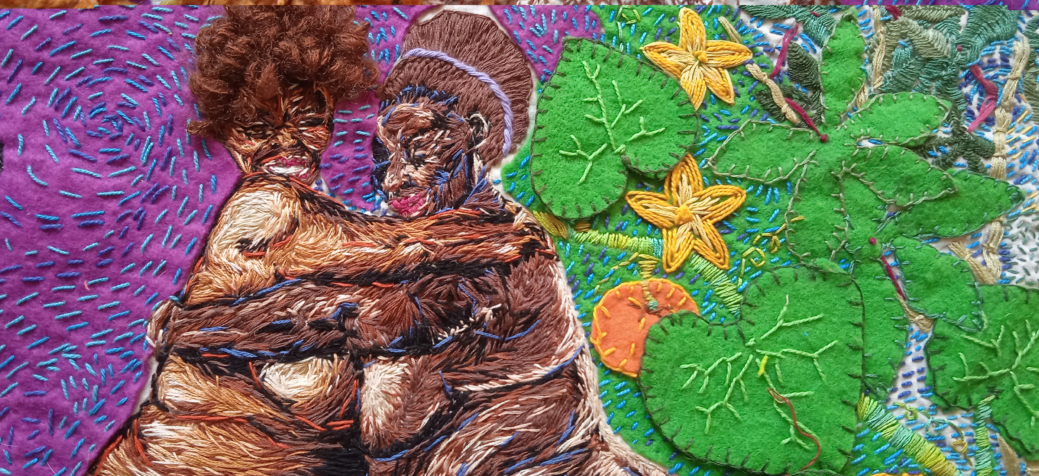When beauty products mention “hair care,” the word implicitly means “the hair that covers the head.” Anything beyond that is nonexistent, unacknowledged. And it is so, because bodily hair falls under the control of the patriarchal gaze; it is one of the factors used to categorize, rule over and discipline women’s bodies, and control bodies. Starting from the duality of man and woman, to the definition of beauty or its absence, and the sexuality of individuals or lack of it, the patriarchal system uses hair – its cut, color, curliness/sleekness, its presence or absence, its location on the body – to check an individual’s gender and class position, and their compliance to the enforced gender.
Through this text, we will discuss the process of the patriarchal system’s control and disciplining practices over bodies through hair. We will focus on the bodies of women, surveilled, controlled and disciplined in a continuous attempt to create “femininity” and protect it.
Through our reading of hair as a tool of body disciplining, we see it as another rearticulation of the body as a space of subjugation. As a result, we ask in this article: how are the conception of “femininity” and the process of creating a “female”, a tool of subjugation and control over women’s bodies on one hand, and as a tool to portray them as imperfect bodies on the other? We will try to answer this question, through Michel Foucault’s conception of power, and through our experiencing of violence produced by existing dynamics of power, hegemony and disciplining.
In Foucauldian terms, power treats bodies as spaces for discipline. When (some) regimes were forced to abolish public practices of torture and retribution, they directed their energy to produce the docile body, that which is subject to its power without the apparent tools of violence. Authority over bodies, in this context, exists but “without the traditional friction that generates resistance”. It seems clear, from the way in which hegemony deals with the bodies of women and colonized peoples, that it seeks to create the disciplinary body through hair. What is striking about how masculine logic classifies the hair that covers the body is how it is classified in two stages: what should the hair look like; and where the hair should grow or not.
Within the framework of “teaching” women discipline and turning them into “compliant bodies,” women are taught from a young age not only how to move and behave, but also how their hair should and should not be. In this sense, “femininity” is one of the tools used to classify behavior on the one hand, and the form of the hair and its presence or absence on the other hand.
Hair is part of the gender-creating process, meaning that the binary of woman-man is closely related to the extent to which the body is covered with hair. Through hair, the patriarchal system differentiates between women and men. Thus it makes women whose bodies have a greater amount of hair, or a different distribution of hair (such as less hair on the head, or/and more on the face, for example), less “feminine,” and men bodies which are less/not covered by hair, less “masculine.”
It thus proves the binary paradigm of femininity and masculinity, and separates them from each other unrealistically. Thus, the bodies of the non-binary, trans, queer, and women who choose not to subject their bodies to this dichotomy are rejected, because the system cannot accept anything outside these two categories. In this, obedient bodies are formed, not only by their behavior, movement, and sexuality, but also by their shape, and by the hair covering them.
The discipline here comes in a greater, harsher, and firmer manner on the bodies of women, queer people, and transgender women, than on the bodies of cis men. Which means that the system seeks to adapt the bodies of women, queer people, and transgender women to a greater extent than the bodies of heterosexual men. From this perspective, we can see how femininity is an effective form of social control.
The bodies of women, queer people, and colonized peoples in particular are the space of this power relationship and its implementation. Based on the Foucauldian theories, our bodies are a ‘text’ that is read, in the patriarchal context, as a ‘hyper’ sexual entity. This excess, that is, the lack of discipline that this body suffers from, is one of the forms of “othering” it. This is why it must be disciplined, pruned and controlled, in order to punish it for its sexuality, and in an attempt to tame it.
In this sense, the form of our hair and its presence or absence, then, does not come as a result of personal and individual choices, but rather as a result of the process of “building the ideal female body.” Jacques Lacan says that the body is secondary and not primary, in the sense that the body is not, but becomes. He goes on to say that this structure or anatomy is not destiny, but rather discourse: just as gender is a social construct, so are our bodies. Which means that they are built, formed, either by the dominant system or by us. And since the dominant system is the strongest today, it succeeds at every stage and at every intersection, in shaping and defining the bodies of individuals, communities and peoples, and thus, making this construction seem primary.
Returning to Foucault as he uses the concept of the panopticon. The panopticon is socially reproduced through the transformation of the women/queer people among themselves into a watchtower for the other. Through which they observe the other’s body, its size and shape, the hair that covers it, and pressures her to get rid of it or trim it, in acceptance of the male gaze, and internalizing the latter in the way women/queer people approach their own bodies.
In this context, it is important to see that what needs to be changed, the bodies that must be “improved,” are deficient bodies, in which there is a birth defect which must be constantly concealed, and its appearance monitored in order to preserve its “femininity.” Thus, the “process” of femininity is a process that alienates women from their bodies and makes them feel defective, while incapacitating them. Specifically, those who do not have the economic capacity, time, or any of the luxury and privileges required for this process.
The absence of public practices of torture and violence towards individuals who do not submit to patriarchal values related to the body does not mean that they are free with their bodies and practices. In reality, they are forced to face punishment of another kind. The demeaning of our curly hair, the frowning looks that face us when hair covers parts of our bodies that should not be covered, is only one form of this punishment.
Under patriarchy, the body is public property—particularly the body of colonized communities, of the trans and queer people, and women. That is, it is the property of society, the latter having the power to determine what it looks like, to control it, to dominate it, and to reject it when the body decides not to follow its standards. Hair is personal, intimate, or public. Hair also has a political structure, not because we want it to be so, but because colonialism and patriarchy made it so.

This article is a short version of the article of the same name originally published in Arabic in My Kali Magazine.
Jana Nakhal is a World March of Women militant from Lebanon. She is currently a member of the WMW International Secretariat.




